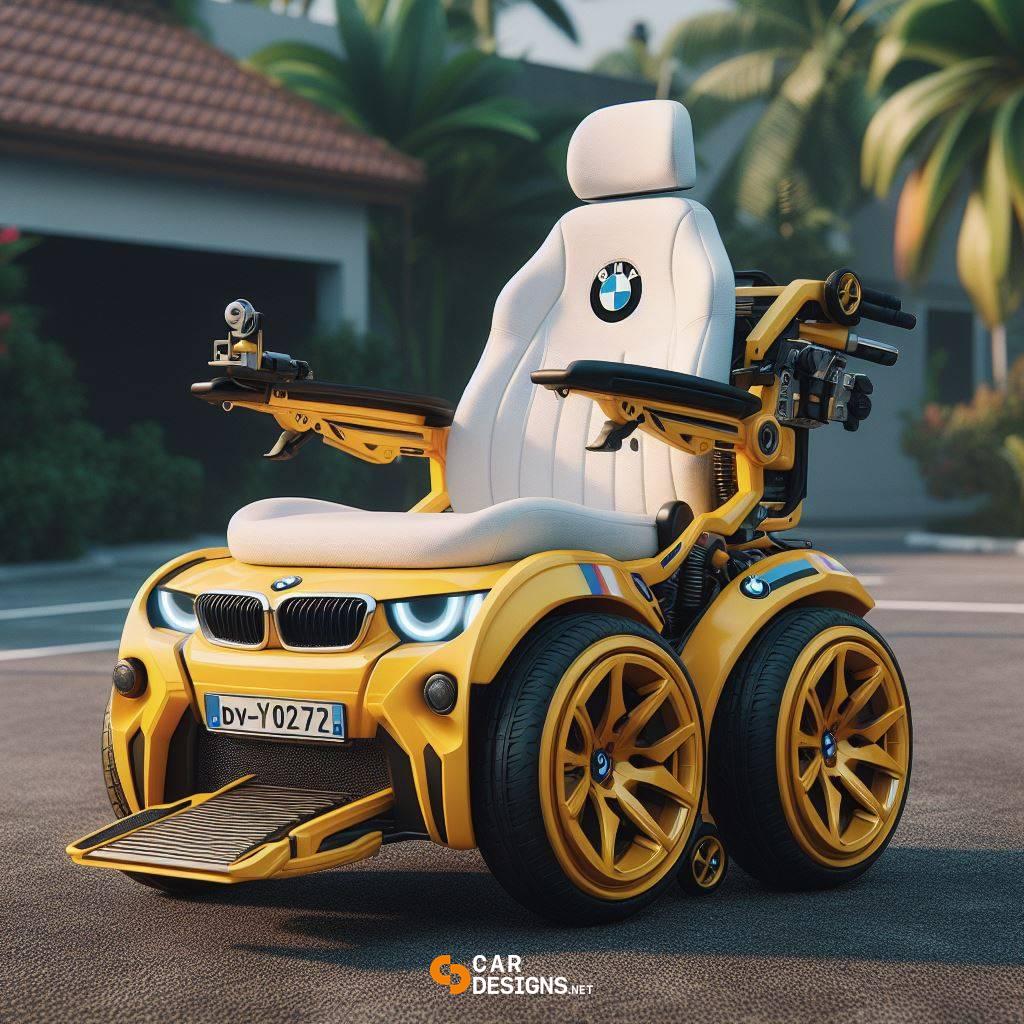Skull Shaped Buses: Gothic and Glamorous Transportation

Transportation is one of the most essential elements of daily life, yet it often lacks excitement or flair. However, a new trend is breaking that mold by combining practicality with eye-catching aesthetics: the skull-shaped bus. This unusual and bold form of transportation reflects a unique fusion of gothic style and modern design, offering more than just a ride from one place to another. In this article, we explore how skull-shaped buses have emerged as a gothic and glamorous phenomenon, delving into their history, significance in pop culture, and the lasting impact they have on urban landscapes and subcultures alike.
Table of Contents
- Introduction
- The History and Evolution of Skull Shaped Buses
- The Allure of Gothic Transportation
- Pop Culture and Skull-Shaped Buses
- The Glamour Behind the Skull Design
- Customization and Creative Expression
- Practicality Meets Style: Functionality of Skull Shaped Buses
- The Future of Skull Shaped Buses in Urban Spaces
- Conclusion
Introduction
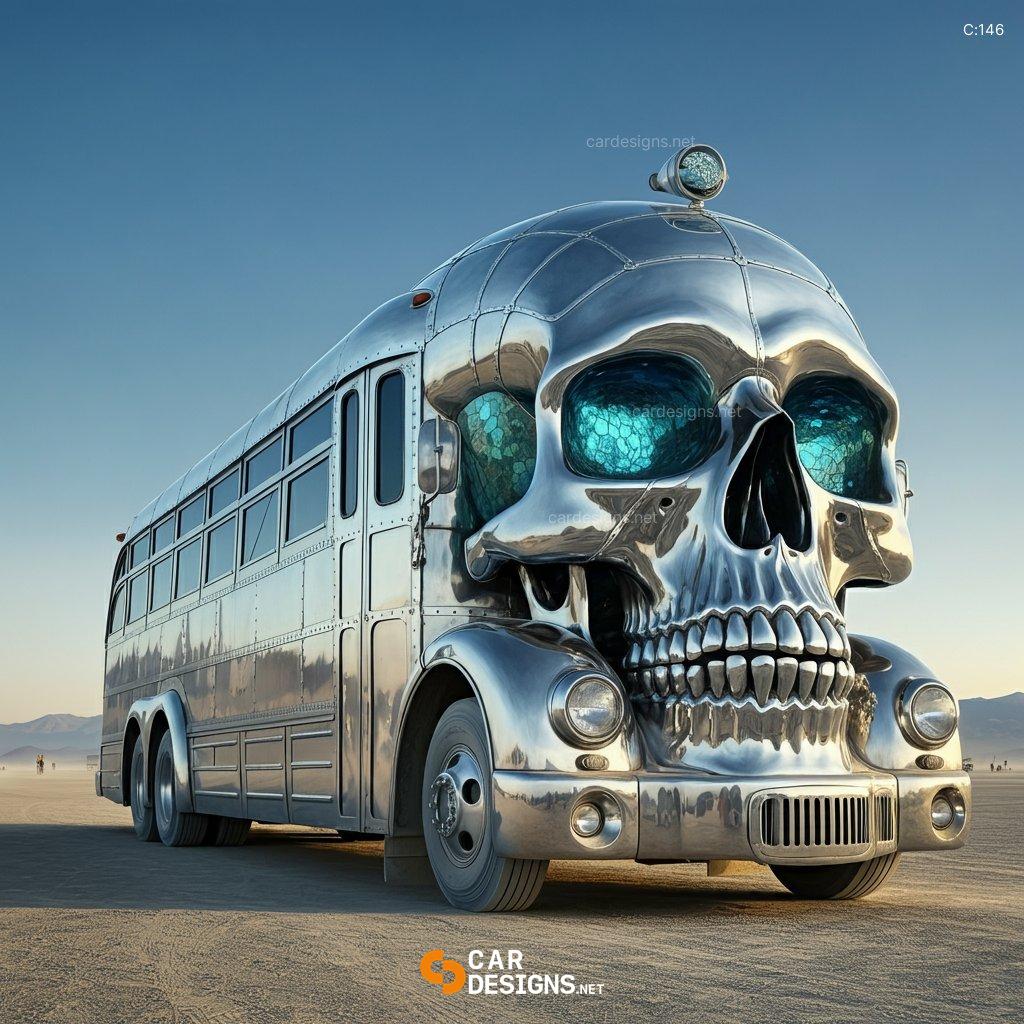
In the realm of unconventional transportation, the skull-shaped bus stands out as a symbol of creativity, rebellion, and style. Combining the dark, mysterious allure of gothic design with the functionality of public transit, skull-shaped buses have captured the imaginations of those seeking to turn a simple commute into an experience. These buses don’t just transport people; they make a statement, celebrating alternative aesthetics while challenging the standard idea of what public transportation should look like.
Far from being a fleeting trend, skull-shaped buses have become part of a growing movement that embraces individuality and cultural symbolism in design. From the streets of major cities to their depictions in movies and television, these buses offer a unique blend of both the macabre and the glamorous. But what exactly draws people to these fascinating vehicles, and how have they evolved into such a distinctive form of transport? Let’s take a closer look at the origins, cultural impact, and future of skull-shaped buses.
The History and Evolution of Skull Shaped Buses
A Rebellious Start: Origins in Underground Culture
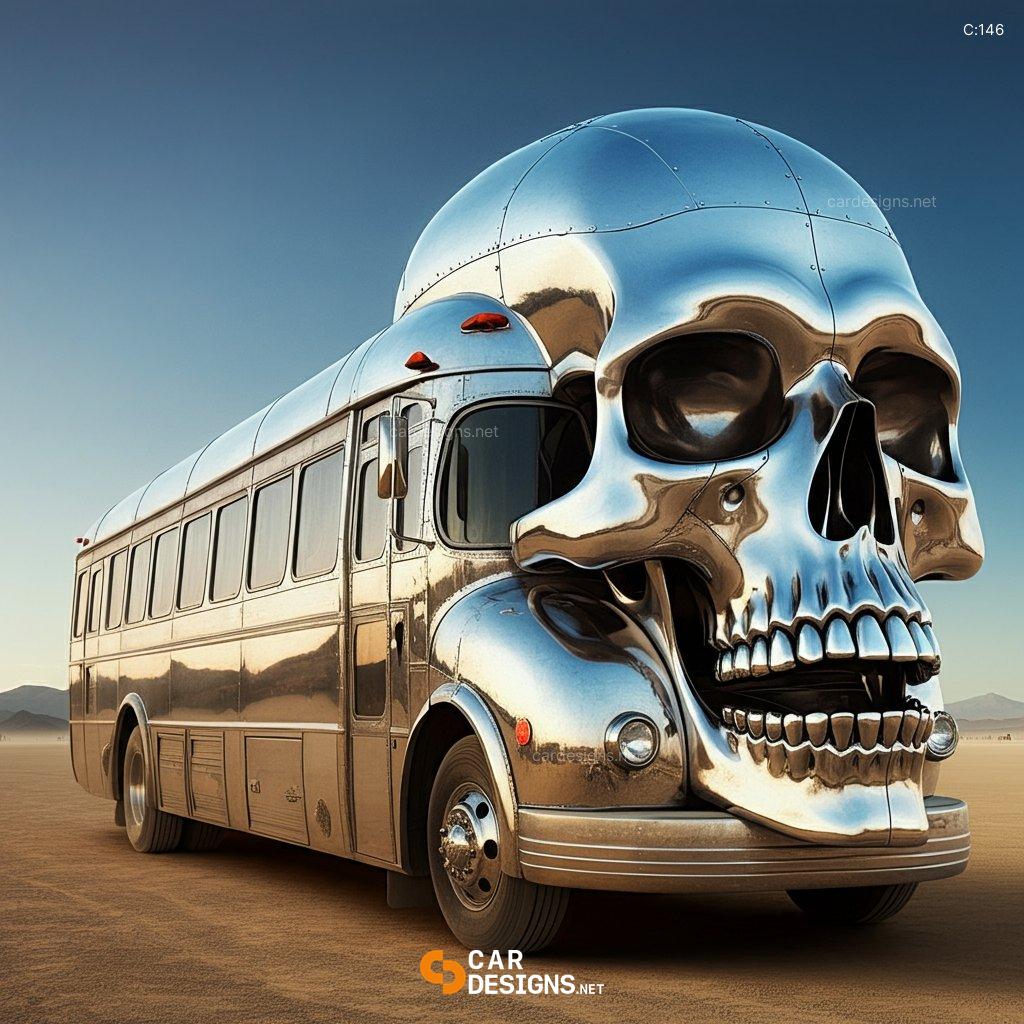
The skull-shaped bus as a concept has roots in the countercultural movements of the late 20th century, particularly within the punk and goth subcultures. These communities often used skulls as symbols of defiance, mortality, and a rejection of mainstream values. The idea of incorporating this aesthetic into a mode of transportation emerged as a way to showcase rebellious attitudes and an affinity for darker, more avant-garde forms of expression.
Skull-shaped buses were initially seen as mobile art installations rather than functioning transit vehicles. Artists and designers would take old, decommissioned buses and rework them into elaborate moving sculptures, complete with gothic detailing, custom interiors, and of course, a massive skull as the centerpiece. These early skull buses became icons in underground festivals, especially in Europe and North America, where they served as both transport and spectacle.
The Allure of Gothic Transportation
Why Gothic? The Symbolism Behind the Design
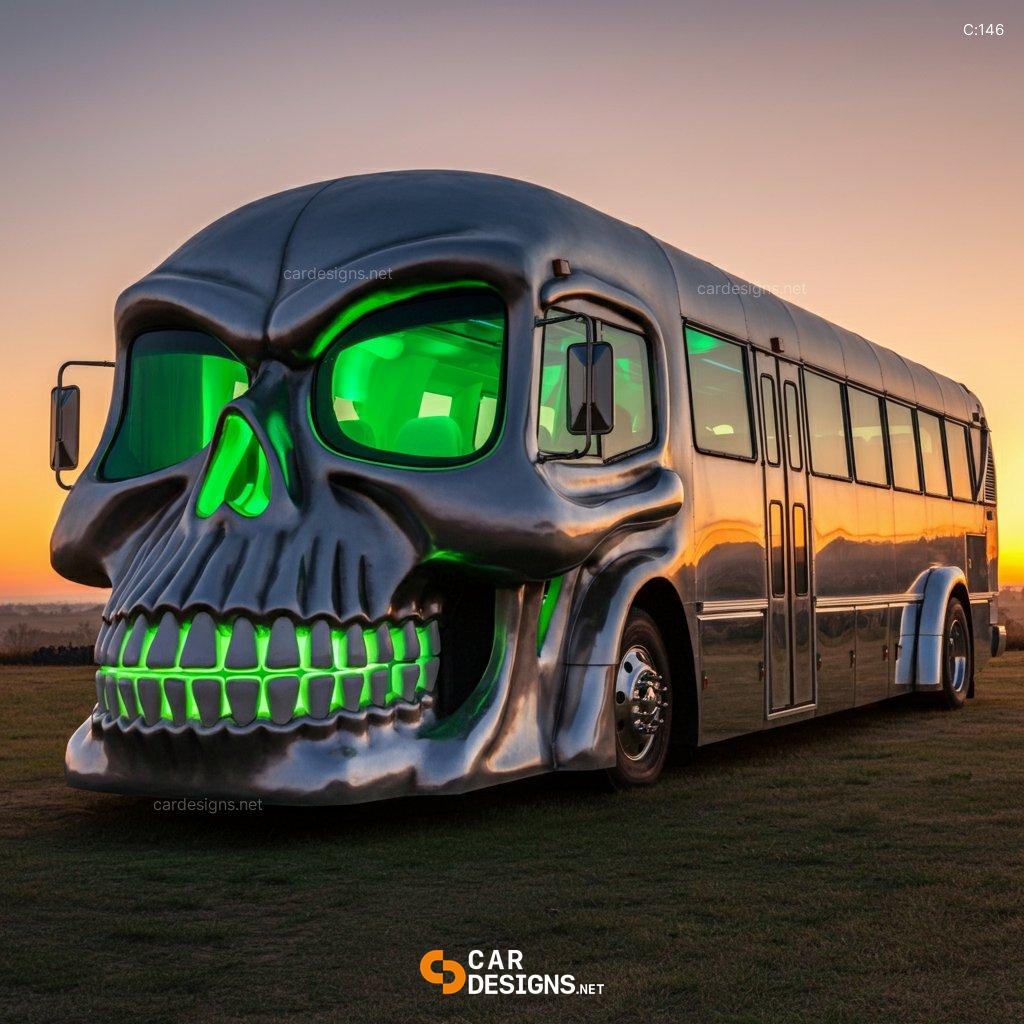
Skull-shaped buses are deeply rooted in gothic aesthetics, which have long been associated with dark romanticism, mystery, and a fascination with mortality. The skull is an iconic image in this subculture, symbolizing both the fragility and permanence of life. In the context of transportation, the skull brings these themes to life in a visceral way—transforming the everyday act of riding a bus into something more symbolic and reflective.
Gothic design in transportation is not just about appearance; it speaks to deeper cultural themes. For many, the appeal of riding a skull-shaped bus lies in its challenge to conventional norms. Traditional buses are functional and often forgettable, while skull-shaped buses carry a sense of theater and drama. They make a statement about embracing one’s uniqueness, even in mundane aspects of life like commuting.
Pop Culture and Skull Shaped Buses
A Vehicle for Storytelling
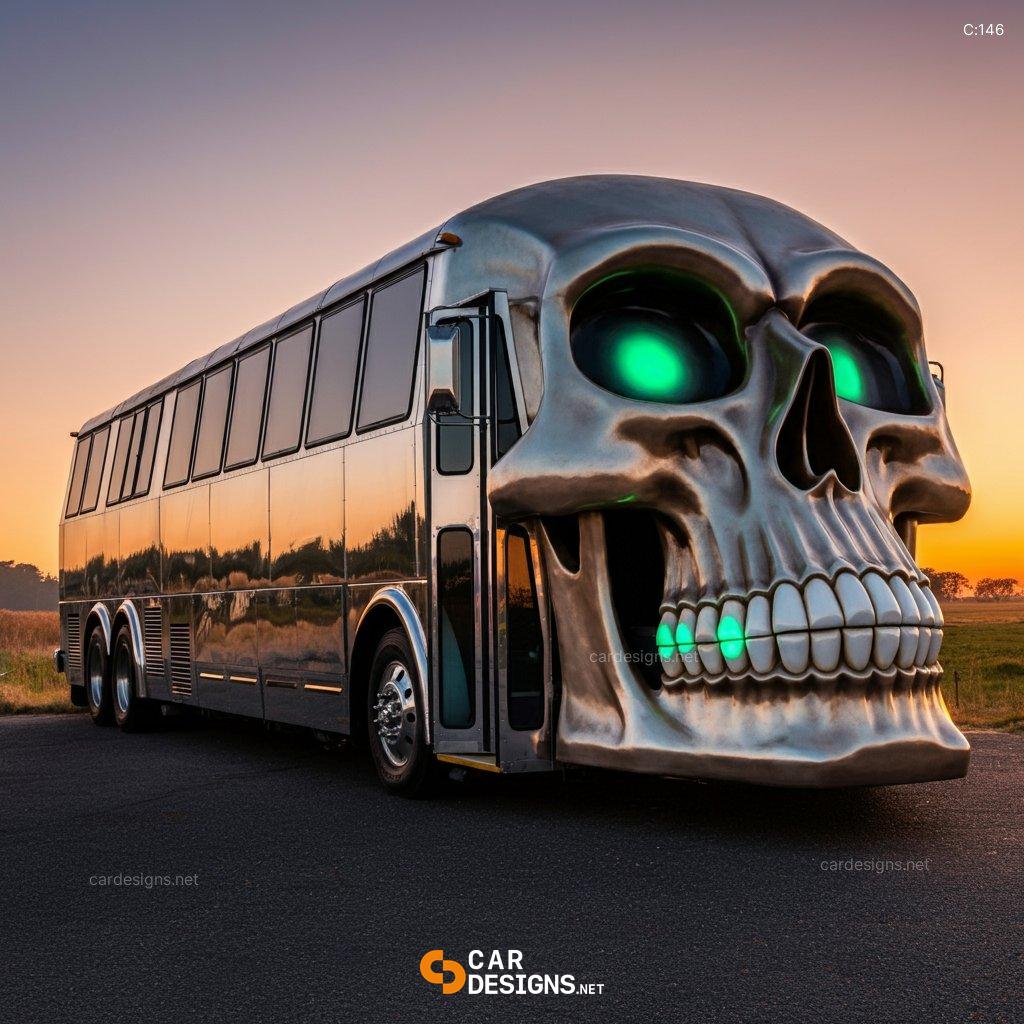
The skull-shaped bus has found a place in popular culture, often symbolizing the intersection between fantasy and reality. Whether appearing in dystopian films, music videos, or graphic novels, these buses serve as powerful symbols of rebellion, transformation, and adventure.
For instance, the skull-shaped bus frequently appears in post-apocalyptic and sci-fi narratives, where transportation is more than just a utility—it becomes a form of survival and self-expression. Directors and writers use these buses as visual metaphors for characters who reject societal norms and seek to carve out their own identities in harsh, futuristic worlds.
The Glamour Behind the Skull Design
Luxurious Interiors: More Than Just a Ride
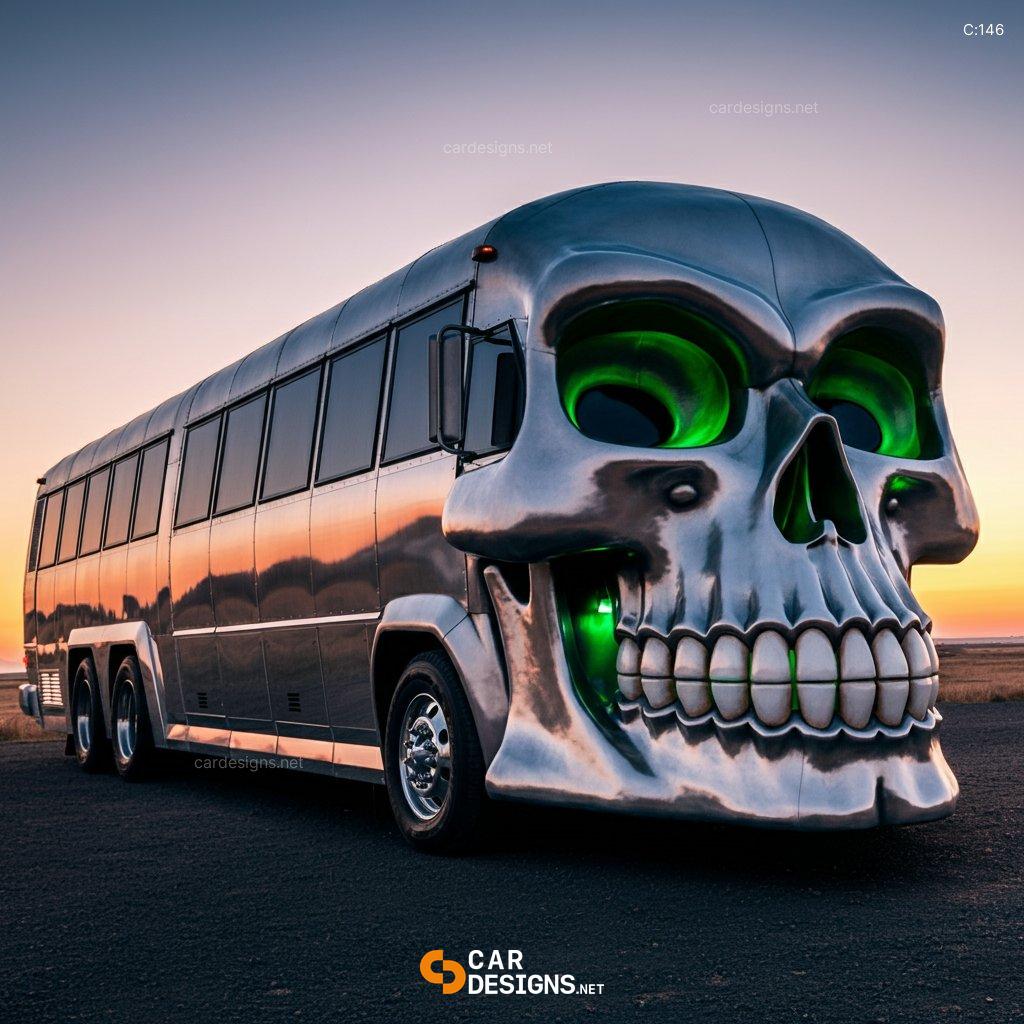
While the exterior of a skull-shaped bus captures the eye, the interiors are equally important in crafting the overall experience. Many of these buses feature plush, high-end furnishings that contrast with the darker, more gothic exterior. Some are designed with velvet seating, chandeliers, or custom lighting to enhance the luxurious feel, making passengers feel as though they’ve entered a world of opulence as soon as they step on board.
The attention to detail is remarkable. From the skull-shaped door handles to the ambient lighting that evokes an eerie yet glamorous atmosphere, the interiors are designed to create a memorable experience that transcends simple transportation.
Customization and Creative Expression
Tailoring the Bus to the Brand or Event

Many skull-shaped buses are customized to reflect a particular brand, event, or theme. For example, a bus designed for a Halloween festival might feature blood-red accents and spider-web detailing, while a bus for a luxury event might include gold trim and high-end seating. This level of customization allows for a high degree of creative expression and ensures that each skull-shaped bus is unique.
Personalizing for Private Use
Beyond public transportation or promotional uses, skull-shaped buses are increasingly being purchased or rented for private use. Celebrities, artists, and entrepreneurs have embraced the trend, often using these buses as mobile lounges, studios, or even party venues. This trend reflects a broader movement toward personalized, experience-driven design, where transportation becomes an extension of one’s personal brand or lifestyle.
Practicality Meets Style: Functionality of Skull Shaped Buses
High Performance Meets Aesthetic Design

Despite their unconventional appearance, skull-shaped buses are built to meet the same standards of safety and performance as any other public transit vehicle. They are designed to handle urban streets, long-distance travel, and can be equipped with the latest technological features, such as GPS navigation, eco-friendly engines, and Wi-Fi connectivity.
The combination of functionality and unique design makes skull-shaped buses not only attention-grabbing but also practical. Many cities use them to draw attention to specific routes, particularly tourist-heavy areas, turning public transport into part of the sightseeing experience.
The Future of Skull Shaped Buses in Urban Spaces
Growing Popularity in Global Cities
The appeal of skull-shaped buses continues to grow, particularly in cities known for their embrace of alternative cultures and cutting-edge design. With their ability to attract attention and create memorable experiences, skull-shaped buses are likely to become a more common sight on city streets, festivals, and special events around the world.
Conclusion
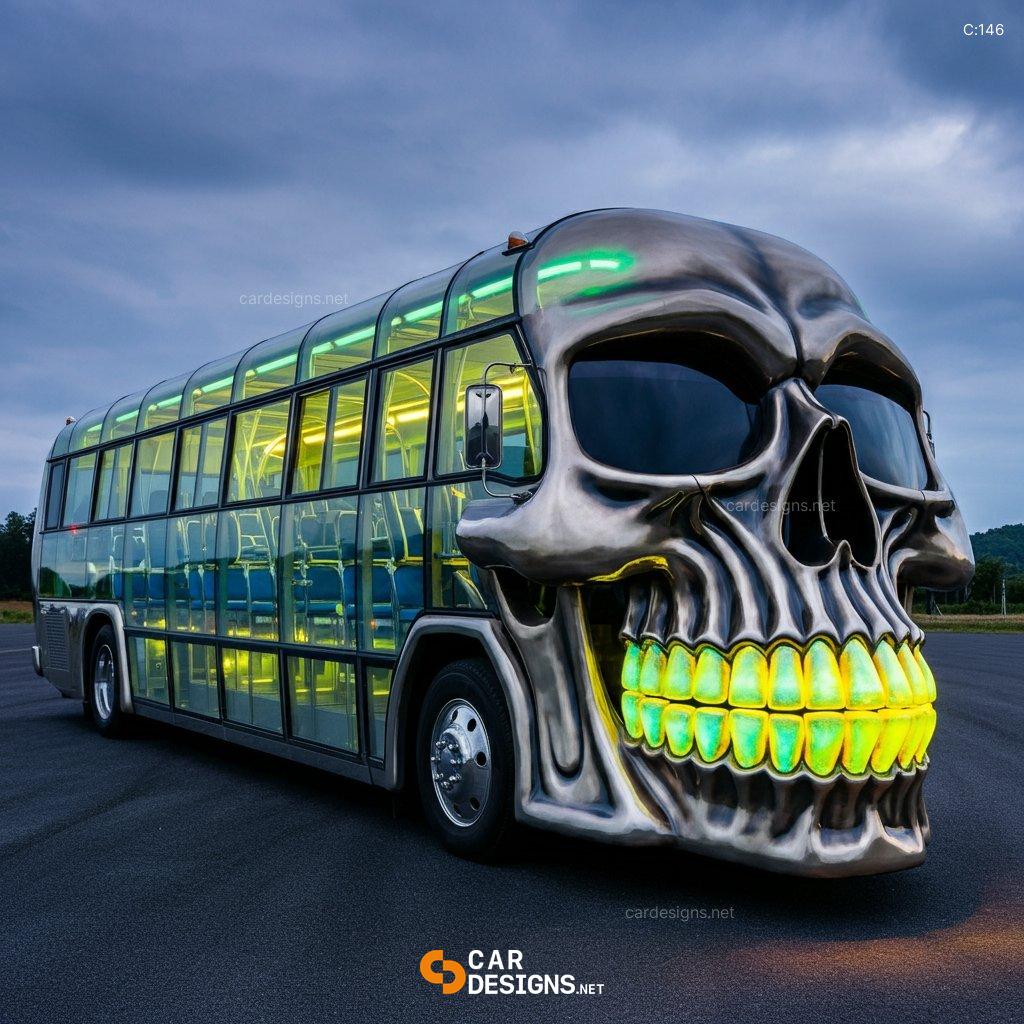
The skull-shaped bus has evolved from a rebellious, underground art form into a stylish and glamorous mode of transportation that captures the imagination of both commuters and onlookers. Its gothic design, luxurious interiors, and ability to make a statement on the streets set it apart from conventional vehicles, making it a standout example of how creativity and functionality can intersect.
